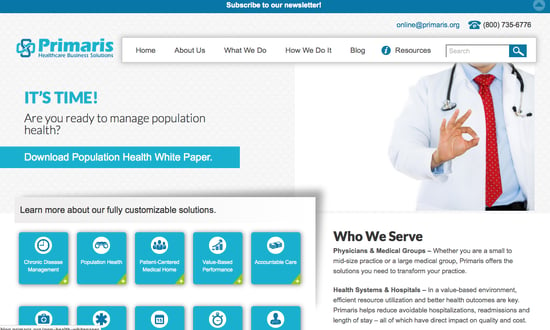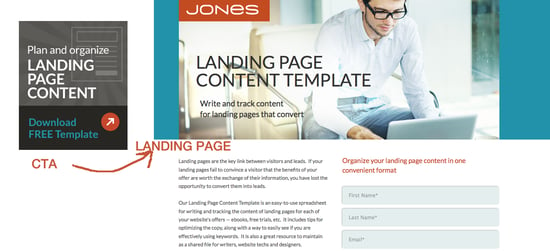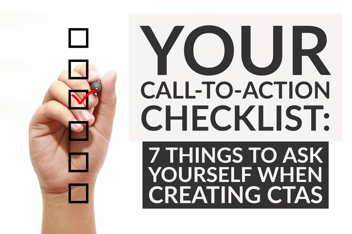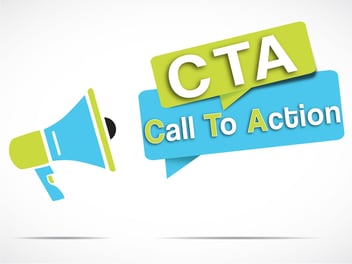10 Steps to Building Better Calls-to-Action

One of the most vital and visible components of an inbound marketing campaign is the call-to-action.
These often simple buttons or links are the key to that magical process by which a website visitor is transformed into a lead. Without calls-to-action, visitors would never find the landing pages that take them to your content.
Optimizing your calls-to-action increases the likelihood that visitors will convert into leads by accessing your content and other offers. We have 10 ways to make your calls-to-action the most effective they can be.
1. Make it clear what the offer is.
Your CTA should clearly describe the offer, with specific details that will encourage visitors to take action. Tell what the offer is (Ebook? White paper? Webinar? Free trial?) and how it will benefit the reader.
It’s easy to see what Primaris is asking you to do here: Download Population Health White Paper. Why? To manage population health.

2. Make it stand out.
This isn’t the time to blend in. While you don’t want your CTA to be obnoxious, you do want it to be seen. Consider using a contrasting color rather than one that blends with the rest of the web page. And make the button large enough to be noticed. It’s tough to miss the bright yellow CTAs on Bellevue University’s home page.

3. Make it action-oriented.
After all, it is a call-to-action. Tell your visitors what it is they will be doing on the landing page, whether that is to “download,” “register” or “subscribe.” The examples above from Bellevue University are simple and to the point.
4. Keep it above the fold.
While not all calls-to-action will be at the top of your web page (see 10 more places you should be using calls-to-action), nearly every page on your website should have at least one CTA above the fold. Ensuring the visitors can see the CTA without having to scroll down the page is a best practice to increase click-through rates.
5. Craft the CTA based on content.
Make sure you match the CTA to the rest of the content on that particular web page. A CTA on your blog’s home page could be an offer to subscribe to email blog updates. CTAs on product pages should offer content related to those products, such as coupons, free trials or videos on how to use the product.
6. Place CTAs on the most relevant blog posts.
Just as you match product page CTAs to related offers, do the same with your blog post pages. For example, when we publish a blog post about social media, we include a CTA to an offer such as a social media scheduling calendar. On posts about search engine optimization, we use CTAs for our on-page SEO template.
7. Create alignment between CTAs and landing pages.
You don’t want to confuse your visitors. Use the same wording and images on your calls-to-action as will appear on the landing page. It should be easy for them to see that the CTA did connect them to the right page when they click on the link.
Visitors who click on our CTA for a landing page content template can easily see right away that they’ve reached the right destination.

8. Optimize your landing page, too.
The CTA is what helps drive traffic to the landing page, but the visitor still needs to take action on the landing page in order to be converted into a lead. Page layout, images and form length can all impact the success of your landing pages.
9. Include CTAs for different stages of the buying cycle.
Remember that not all visitors are looking for the same thing. Include CTAs with offers for both visitors at the top of the sales funnel, who are looking for informational and introductory material such as a case study, and CTAs for bottom-of-the-funnel offers such as a free consultation. Consider having at least three different CTAs on your home page in order to catch the most traffic possible.
10. Keep testing.
While the suggestions above, and in our Comprehensive Guide to Creating and Executing Calls-to-Action, represent best practices for inbound marketing, each business and its customers will be slightly different. Use A/B testing to determine which colors, sizes, message and placement works best in the real world for your website.
What have you found helps your CTAs perform best? Share your own tips and then download our free ebook to find more tips, including examples of who is doing it right (and wrong).
-1.png?width=1652&height=294&name=Jones(RGB)-1.png)











